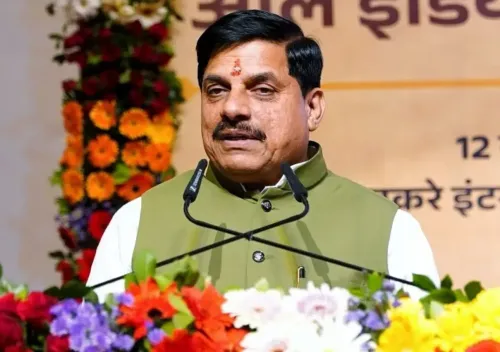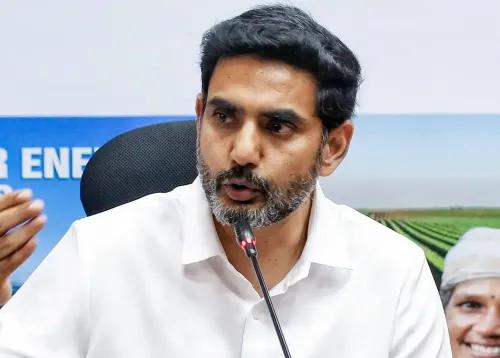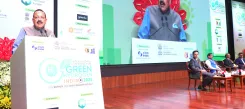Is India’s smartphone market really at a 5-year high? Apple achieves record quarterly shipments!

Synopsis
Key Takeaways
- India's smartphone market grew 4.3% YoY in Q3 2025.
- Apple recorded 5 million units shipped, its highest ever in India.
- The iPhone 16 was the top performer in the market.
- Mid-premium segment saw a 10.7% growth YoY.
- Smartphone ASPs reached a record $294.
New Delhi, Nov 11 (NationPress) The smartphone industry in India has hit a remarkable five-year peak in the festive third quarter of 2025 (Q3), experiencing a growth of 4.3 percent year-over-year (YoY) to reach 48 million units, as per the data released by the International Data Corporation (IDC) on Tuesday.
Apple celebrated its highest quarterly shipments ever in India during Q3 2025, achieving 5 million units and marking its first entry into the fourth position in the market.
The iPhone manufacturer showcased a robust 25.6 percent YoY growth, fueled by persistent demand for both new and existing models.
The iPhone 16 stood out as the most-shipped smartphone in India for the quarter, contributing 5 percent of total market shipments, while the recently launched iPhone 17 series and iPhone Air made a historic debut, accounting for 16 percent of Apple’s Q3 shipments — marking the strongest launch-quarter performance for any iPhone since 2021.
The mid-premium segment saw a growth of 10.7 percent YoY, with its share rising from 3 percent to 4 percent. Samsung secured the top position, followed by OPPO and OnePlus.
The Galaxy S24 made up nearly one-quarter of total shipments in this range, driven by significant discounts on e-commerce platforms.
“Intensive festive promotions and adaptable financing options resulted in strong shipment volumes during Q3 2025. However, consumer demand remained focused on the premium segment, leaving the mass market under pressure and leading to a substantial inventory accumulation as we head into Q4 2025,” stated Upasana Joshi, senior research manager, Devices Research, IDC Asia Pacific.
This surplus has been worsened by increasing component costs — notably in memory — and currency fluctuations, prompting brands to elevate prices after Diwali.
“Consequently, IDC anticipates a year-over-year decline in shipments for Q4 2025, resulting in an overall annual contraction, with total smartphone shipments likely to drop below 150 million units for the year,” Joshi added.
Average selling prices (ASPs) for smartphones soared to a record $294 in Q3, reflecting a 13.7 percent year-over-year (YoY) increase, driven by strong demand for premium and higher-spec models.









